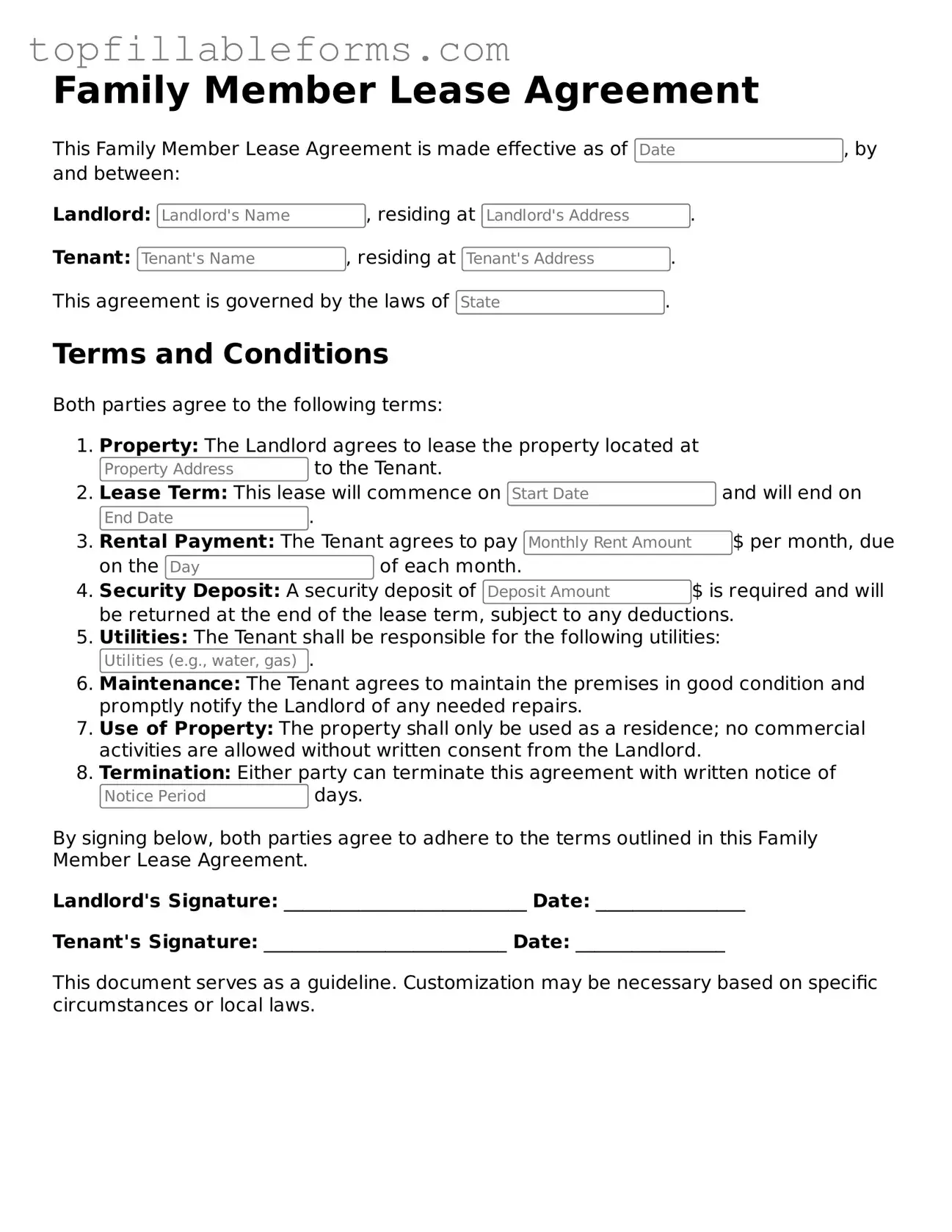Free Family Member Lease Agreement Form
The Family Member Lease Agreement form is a legal document that outlines the terms and conditions under which a family member can rent a property from another family member. This agreement helps clarify expectations regarding rent, maintenance responsibilities, and duration of the lease. By using this form, families can establish a clear understanding, reducing potential conflicts and ensuring a smooth living arrangement.
Open Family Member Lease Agreement Editor Here
